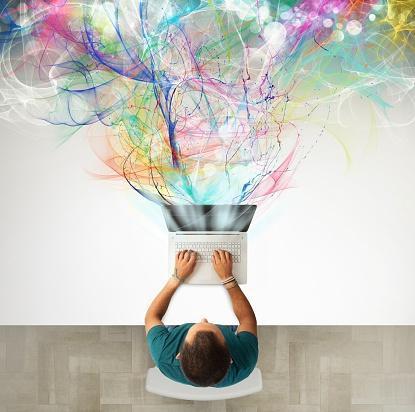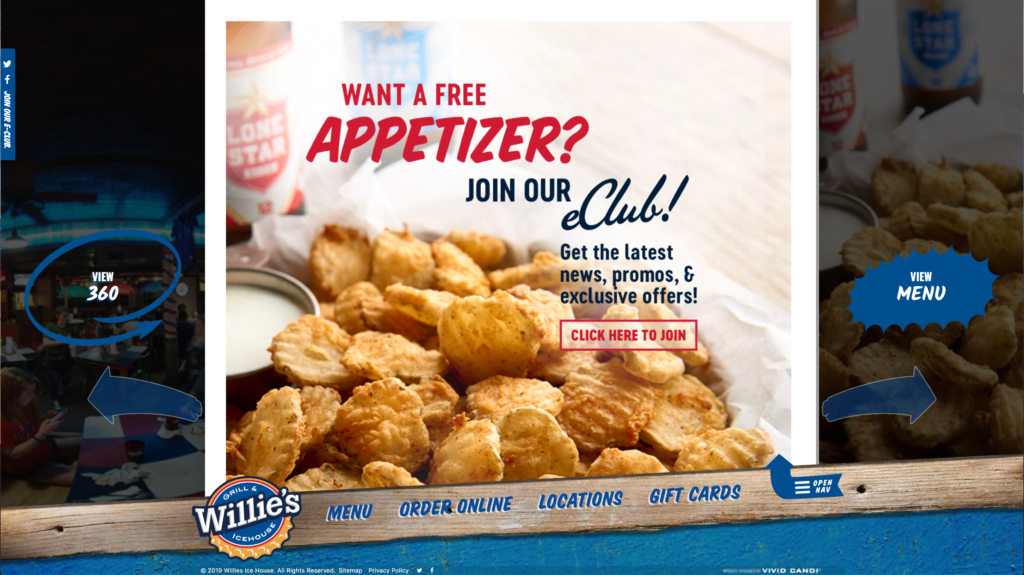
Billboards, digital ads, posters, comics, digital art – are most likely the first words that come to mind when you hear the term, “graphic design.” Yes, graphic design does encompass each one of those mediums; however, it is much more than that. Graphic Design is defined as the profession or art of visual communication. This visual language uses vivid images, specific words, and creative ideas to convey information to a target audience to evoke emotion or some effect. You can consider graphic design to be the communication of ideas through visual effects and multimedia design.
Elements for Graphic Design
Graphic design is an expressive art form that combines aesthetics with the basic elements of design. There are elements of visual design that contribute to its effectiveness in portraying a message, which include line, space, texture, shape, color, and typography.
Line:
A line is created by the movement of an artists pen from point A to point B. These lines can come in many sizes; whether it be curved or straight, thin or thick, lines create the edges and outlines of objects.
Space:
Whether it be above, below, inside, or within an object, the area left blank around a particular object is called space. Space is necessary to break up the clutter and to transfer two dimensional objects into three dimensional objects.
Texture:
When you brush your hand across a rough surface, what do you feel? In visual design, texture relates to how an object or surface would theoretically feel if it could be touched. It is an add-on feature that enhances an overall visual design. For instance, texture can be silky, soft, rocky, slimy, glossy, etc.
Shape:
A shape is defined as being a closed two dimensional object composed of lines and defined edges. Shapes can be organic and not follow any clear structure, they can be abstract or obscure, or they can be geometric, taking on a clear, precise structure.
Color:
Color is the product of light, which is transmitted from hitting an object then reflecting into the human eye. Color is quite arguably one of the most important elements of design because it attracts an audience’s attention. Also, psychology shows that each color triggers a certain emotion and attitude. Within the element of color, there are three properties. The first characteristic is the hue, which simply means which color family. The second property deals with the exposure of the color, otherwise defined as value. The last property is called saturation, which refers to the intensity of an image.
Typography:

Typography is the art form that relates to the arrangement and design of lettering and text. Within typography, there are eight basic design elements that include: typeface, contrast, hierarchy, consistency, color, alignment, and white space. All these elements are essential to getting the message of the advertisement or visual across effectively.
Principles for Graphic Design
These principles are guidelines of how to arrange the elements mentioned below in a visually appealing way to create a cohesive storyline. The Principles of Design make up for the whole layout of a project and include contrast, repetition, alignment, proximity and balance.
Contrast:
The use of contrast is essential to grabbing a viewer’s attention and gravitating their eyes towards a message. Contrast, by definition, means “the difference in visual properties that make one object distinguishable from the other.” Contrast is a dynamic concept that sparks interest and excitement from its audience.
Repetition:
Repetition, when used correctly, creates unity within a design layout. Elements can be composed into a compelling pattern and place emphasis on the message that keeps being duplicated. However, too much repetition can be overwhelming, so it is key to incorporate other principles of design to combat this issue.
Alignment:
The position the objects are placed makes a huge difference when conveying a message to an audience. The principle of alignment is related to the organization and visual connection among the individual elements.
Proximity:
Proximity is defined as the nearness that objects are to each other. An artist can use this principle to redirect a viewer’s focus to a certain location based on how close the objects are placed next to one another.
Balance:
Balance is necessary throughout life. Just as you need a balanced pH to stay alive and a balanced work-social life to feel unstressed, a graphic design message depends on balance to communicate a message effectively. Balance provides stability as it distributes the weight and color of objects across a design layout.
Graphic Design In The Work Field
Nowadays, careers in Graphic Design have grown exponentially as we find out more and more opportunities for its use during this digital age. We are now left with a plethora of jobs that rely on Graphic Design.
Marketing and Advertising Careers:
Perhaps the most common career when dealing with graphic design is in marketing and advertising. Making large digitally manipulated billboards, social media posts, and vibrantly graphic magazine covers all fall under design careers involving digital marketing and advertising.
Corporate Careers:
Graphic Design has made its way to Corporate Design. When it comes to the overall visual appearance of a company along with trademarked logos and brands, corporate design takes over.
Product Design Careers:
Packaging design has became extremely important. Creative labeling entices customers to buy their products over their competitor’s products. Here, graphic design is key in making the visual component of labels, packages, boxes, stickers, just to name a few.
Graphic Design is…
Overall, Graphic Design is becoming an essential passage of visual communication through the principles and elements of art. With the growing generation of digital-centric consumers, it is wise to get a better grasp on what graphic design is and how to harness it to your advantage!

